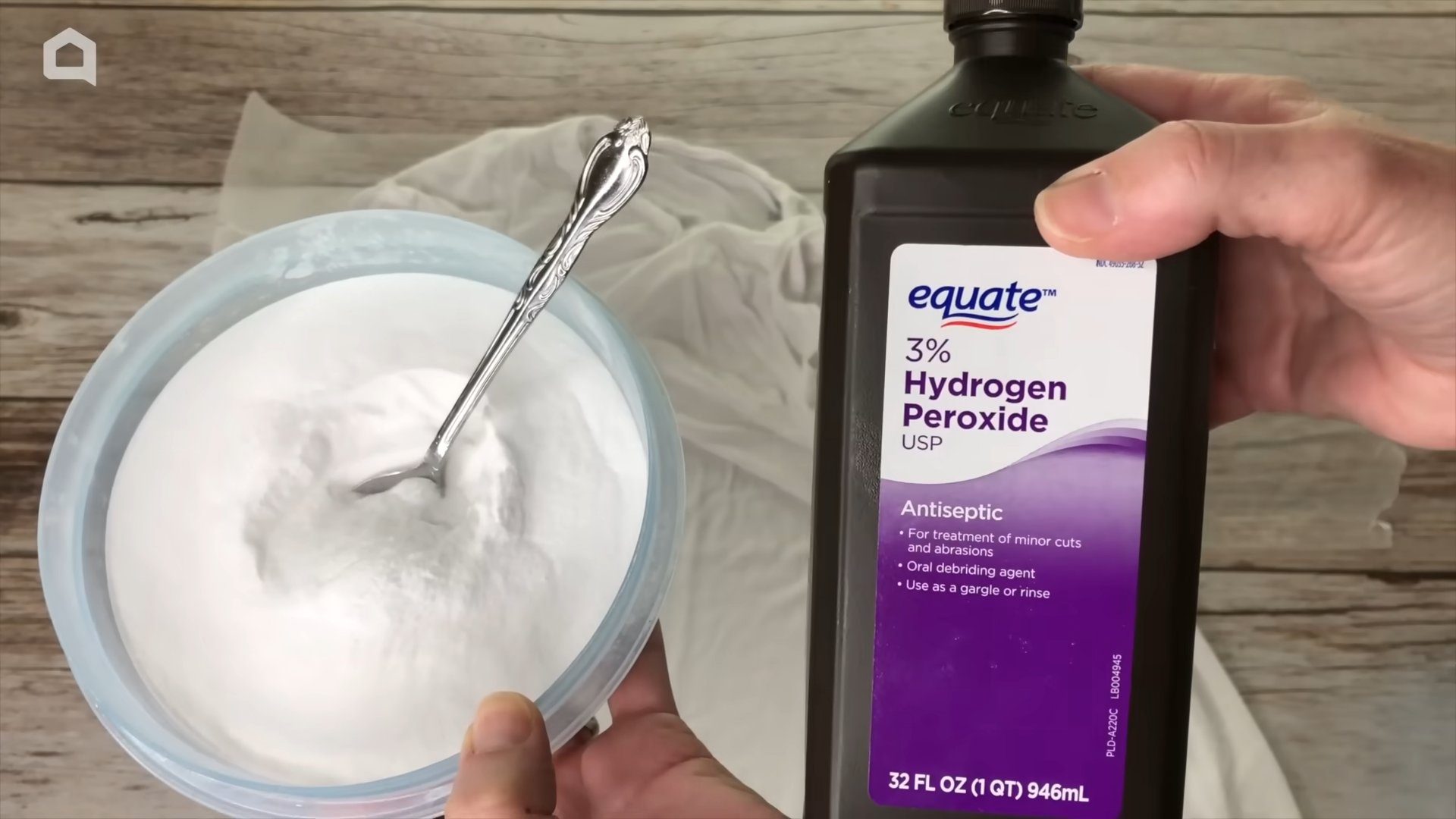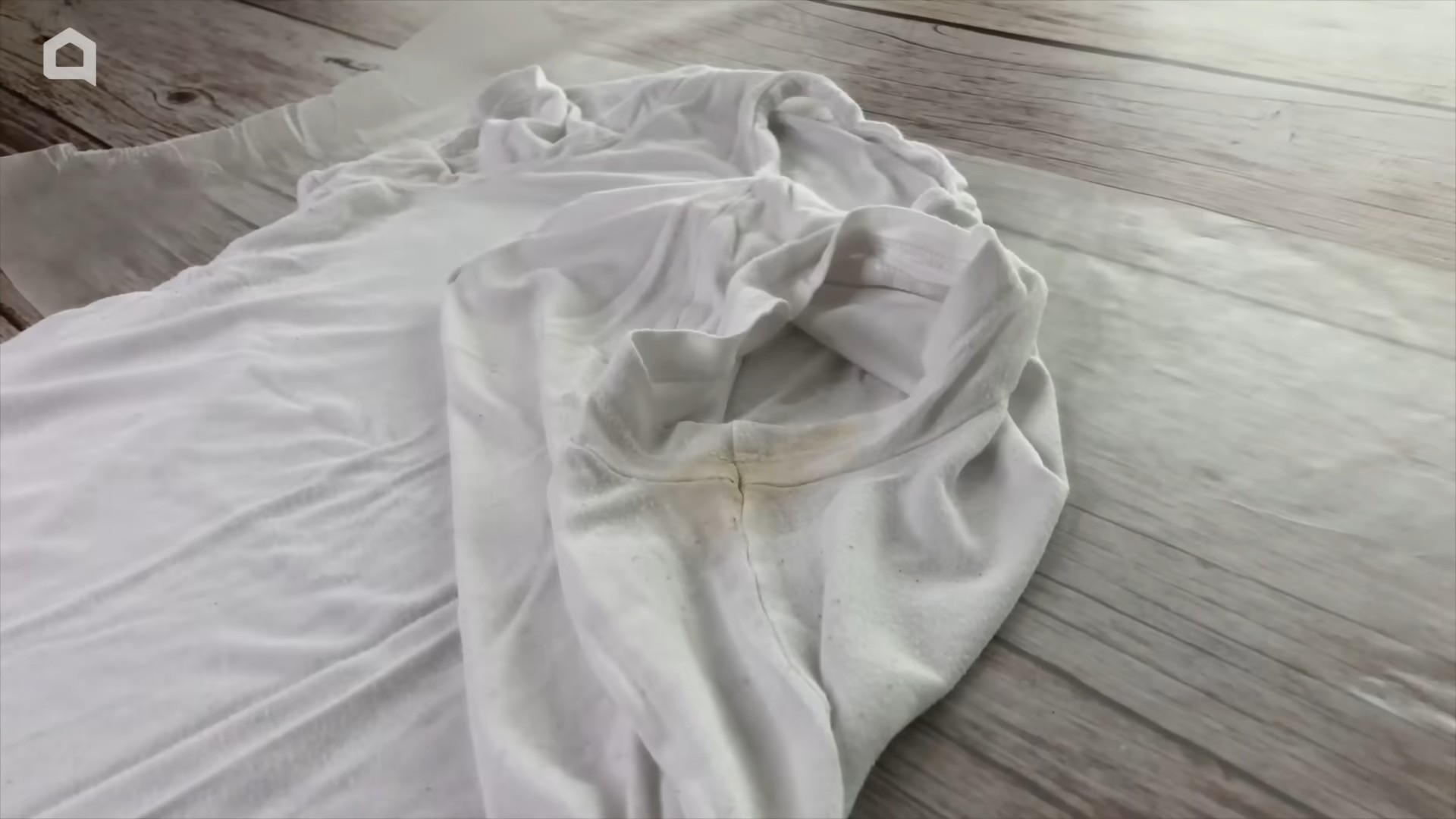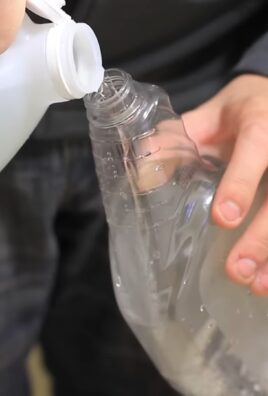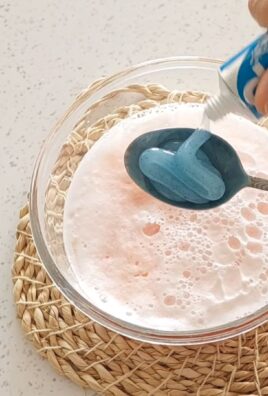Hydrogen peroxide uses extend far beyond just disinfecting cuts and scrapes! I’m always amazed by the versatility of this humble household staple, and I’m excited to share some incredible DIY tricks that will transform your home and garden.
For generations, hydrogen peroxide has been a go-to solution for minor medical needs. But did you know that its oxidizing properties make it a fantastic eco-friendly alternative to harsh chemicals in various applications? Think of it as a secret weapon, passed down through generations, now ready to unleash its full potential in your hands.
In today’s world, we’re all looking for ways to simplify our lives, save money, and reduce our reliance on potentially harmful products. That’s where these DIY hydrogen peroxide uses come in! From boosting plant growth and fighting fungal infections to cleaning stubborn stains and even whitening your teeth, the possibilities are truly endless. I’m going to show you how to harness the power of hydrogen peroxide to create a healthier, cleaner, and more vibrant environment, all while saving you time and money. Get ready to be amazed!

Unlocking the Power of Hydrogen Peroxide: More Than Just a First-Aid Staple!
Hey there, DIY enthusiasts! I’m so excited to share some amazing ways you can use hydrogen peroxide (H2O2) around your home. You probably know it as that brown-bottled antiseptic in your medicine cabinet, but trust me, this stuff is a multi-tasking marvel! We’re talking cleaning, disinfecting, brightening, and even gardening – all with one inexpensive solution. Let’s dive in and explore the incredible versatility of hydrogen peroxide!
Cleaning and Disinfecting Like a Pro
Hydrogen peroxide is a fantastic alternative to harsh chemical cleaners. It’s non-toxic (when used properly, of course!), biodegradable, and incredibly effective at killing germs and bacteria. Remember to always use a 3% solution, which is the standard concentration you find in drugstores. And always test in an inconspicuous area first, especially on colored fabrics or delicate surfaces.
Disinfecting Kitchen Surfaces
The kitchen is a breeding ground for bacteria, so keeping it clean is crucial. Hydrogen peroxide is my go-to for disinfecting countertops, cutting boards, and even the inside of the refrigerator.
1. Prepare your spray bottle: Pour 3% hydrogen peroxide into a clean spray bottle. No need to dilute it further.
2. Spray and let it sit: Generously spray the surface you want to disinfect.
3. Wait for 5-10 minutes: This is important! Hydrogen peroxide needs time to work its magic and kill those pesky germs.
4. Wipe clean: Use a clean cloth or paper towel to wipe away the hydrogen peroxide.
5. Rinse (optional): If you’re disinfecting a surface that comes into direct contact with food, like a cutting board, you might want to rinse it with water after wiping.
Cleaning and Whitening Grout
Grime and mildew love to hide in grout lines, making your tiles look dull and dirty. Hydrogen peroxide can help you restore your grout to its former glory.
1. Make a paste: Mix hydrogen peroxide with baking soda to form a thick paste. The consistency should be similar to toothpaste.
2. Apply the paste: Use an old toothbrush or a grout brush to apply the paste to the grout lines.
3. Let it sit: Allow the paste to sit for at least 15-20 minutes. For stubborn stains, you can let it sit even longer, up to an hour.
4. Scrub: Use the toothbrush or grout brush to scrub the grout lines. You’ll see the grime and mildew start to lift away.
5. Rinse: Rinse the area thoroughly with water to remove the paste and any remaining residue.
Sanitizing Sponges and Dishcloths
Sponges and dishcloths are notorious for harboring bacteria. Give them a good soak in hydrogen peroxide to keep them clean and fresh.
1. Soak in hydrogen peroxide: Fill a bowl or sink with 3% hydrogen peroxide.
2. Submerge the sponge/dishcloth: Make sure the sponge or dishcloth is completely submerged in the hydrogen peroxide.
3. Let it soak: Allow it to soak for at least 10-15 minutes.
4. Rinse thoroughly: Rinse the sponge or dishcloth thoroughly with water.
5. Air dry: Allow it to air dry completely before using it again.
Cleaning the Toilet Bowl
Hydrogen peroxide can help keep your toilet bowl clean and fresh.
1. Pour into the bowl: Pour about ½ cup of 3% hydrogen peroxide into the toilet bowl.
2. Let it sit: Allow it to sit for about 30 minutes.
3. Scrub and flush: Scrub the bowl with a toilet brush and then flush.
Brightening and Whitening
Hydrogen peroxide has mild bleaching properties, making it useful for brightening and whitening various items around your home.
Whitening Laundry
Hydrogen peroxide can help brighten white clothes and remove stains.
1. Add to the washing machine: Add 1 cup of 3% hydrogen peroxide to your washing machine along with your regular laundry detergent.
2. Wash as usual: Wash your white clothes as usual.
3. Important note: Do not use hydrogen peroxide on colored clothes, as it may cause fading. Always test on an inconspicuous area first.
Brightening Yellowed Nails
If your nails are looking a bit yellowed, hydrogen peroxide can help brighten them up.
1. Make a soaking solution: Mix 1/4 cup of hydrogen peroxide with 1/2 cup of warm water.
2. Soak your nails: Soak your nails in the solution for about 5-10 minutes.
3. Rinse and moisturize: Rinse your hands with water and apply a moisturizer.
Cleaning and Whitening Shoes
Hydrogen peroxide can help remove dirt and stains from white canvas shoes.
1. Make a cleaning paste: Mix hydrogen peroxide with baking soda to form a paste.
2. Apply the paste: Apply the paste to the dirty areas of your shoes.
3. Let it sit: Allow the paste to sit for about 30 minutes.
4. Scrub: Use a brush to scrub the shoes.
5. Rinse: Rinse the shoes thoroughly with water and let them air dry.
Gardening Benefits
Believe it or not, hydrogen peroxide can also be beneficial for your plants! It can help aerate the soil, kill fungus, and even promote root growth.
Aerating Soil
Hydrogen peroxide releases oxygen when it breaks down, which can help aerate the soil and improve drainage.
1. Dilute the hydrogen peroxide: Mix 1 tablespoon of 3% hydrogen peroxide with 1 quart of water.
2. Water your plants: Use this solution to water your plants as usual.
3. Frequency: You can use this solution every few weeks to help aerate the soil.
Killing Fungus
Hydrogen peroxide can help kill fungus and prevent fungal diseases in your plants.
1. Dilute the hydrogen peroxide: Mix 1 teaspoon of 3% hydrogen peroxide with 1 cup of water.
2. Spray the affected areas: Spray the solution on the affected areas of your plants.
3. Repeat as needed: Repeat this treatment every few days until the fungus is gone.
Promoting Root Growth
Hydrogen peroxide can help promote root growth in seedlings and cuttings.
1. Dilute the hydrogen peroxide: Mix 1 teaspoon of 3% hydrogen peroxide with 1 cup of water.
2. Soak the roots: Soak the roots of your seedlings or cuttings in the solution for about 5-10 minutes before planting.
Personal Care Uses (with caution!)
While hydrogen peroxide can be used for some personal care purposes, it’s important to exercise caution and use it sparingly. Always dilute it properly and avoid using it on sensitive areas.
Mouthwash (occasional use only!)
Hydrogen peroxide can be used as a mouthwash to kill bacteria and freshen breath, but it should only be used occasionally and in a diluted form.
1. Dilute the hydrogen peroxide: Mix equal parts of 3% hydrogen peroxide and water.
2. Swish in your mouth: Swish the solution in your mouth for about 30 seconds.
3. Spit it out: Do not swallow the solution.
4. Rinse with water: Rinse your mouth thoroughly with water.
5. Important note: Do not use hydrogen peroxide mouthwash regularly, as it can irritate your gums and damage tooth enamel.
Earwax Removal (consult a doctor first!)
Hydrogen peroxide can help soften earwax and make it easier to remove, but it’s important to consult a doctor before using it for this purpose, especially if you have any ear problems.
1. Dilute the hydrogen peroxide: Mix equal parts of 3% hydrogen peroxide and water.
2. Tilt your head: Tilt your head to the side so that the ear you want to clean is facing up.
3. Pour the solution into your ear: Use a dropper to pour a few drops of the solution into your ear.
4. Let it sit: Let the solution sit in your ear for about 5-10 minutes.
5. Tilt your head to drain: Tilt your head to the other side to drain the solution from your ear.
6. Important note: If you experience any pain or discomfort, stop using hydrogen peroxide and consult a doctor.
Important Safety Precautions
Before you start using hydrogen peroxide for all these amazing hacks, it’s crucial to keep these safety precautions in mind:
* Always use a 3% solution: This is the standard concentration you find in drugstores and is safe for most household uses. Higher

Conclusion
So, there you have it! Unlocking the power of hydrogen peroxide for everyday uses is not just a cost-effective alternative to expensive commercial products; it’s a gateway to a cleaner, healthier, and more sustainable lifestyle. From tackling stubborn stains to boosting your garden’s vitality, the versatility of this simple solution is truly remarkable. We’ve explored a range of applications, demonstrating how easily you can incorporate this DIY trick into your daily routine.
But why is this a must-try? Because it empowers you. It gives you control over the ingredients you use in your home and on your body, reducing your reliance on harsh chemicals and potentially harmful additives. It’s about making informed choices and embracing a more natural approach to cleaning, beauty, and even gardening. Plus, let’s be honest, the satisfaction of creating your own effective solutions is incredibly rewarding.
Don’t be afraid to experiment! While we’ve provided specific guidelines, feel free to adjust the concentrations and applications to suit your individual needs and preferences. For instance, if you’re using hydrogen peroxide as a mouthwash, you might prefer a slightly weaker solution. If you’re dealing with particularly stubborn mold, you might need to increase the concentration or repeat the application. Remember to always prioritize safety and perform a spot test before applying any solution to a large area.
Consider these variations to further enhance your experience:
* **Infused Cleaning Solutions:** Add a few drops of your favorite essential oil, like lemon or lavender, to your hydrogen peroxide cleaning solutions for a refreshing scent and added antibacterial properties.
* **DIY Stain Remover Boost:** Combine hydrogen peroxide with baking soda and a touch of dish soap for an even more powerful stain-removing paste.
* **Gardening Power-Up:** Dilute hydrogen peroxide with water and add a small amount of Epsom salts for a nutrient-rich foliar spray that promotes healthy plant growth.
The possibilities are endless! The key is to start experimenting and discover what works best for you.
We wholeheartedly encourage you to try these DIY hydrogen peroxide uses. Embrace the simplicity, the effectiveness, and the eco-friendliness of this incredible solution. We’re confident that you’ll be amazed by the results.
But don’t just take our word for it! We want to hear about your experiences. Share your tips, tricks, and success stories in the comments below. Let us know how you’ve incorporated hydrogen peroxide into your daily routine and what amazing results you’ve achieved. Your insights could inspire others to embrace this powerful DIY trick and unlock its full potential. Together, we can create a community of informed and empowered individuals who are committed to a cleaner, healthier, and more sustainable future. So go ahead, give it a try, and let us know what you think!
Frequently Asked Questions (FAQ)
Is hydrogen peroxide safe to use?
Yes, when used correctly and with appropriate precautions. Always dilute hydrogen peroxide according to the recommended concentrations for each application. Avoid contact with eyes and skin, and wear gloves when handling concentrated solutions. Never mix hydrogen peroxide with other cleaning agents, especially bleach, as this can create dangerous fumes. Keep hydrogen peroxide out of reach of children and pets. If ingested, seek immediate medical attention. It’s also a good idea to perform a spot test on a small, inconspicuous area before applying any hydrogen peroxide solution to a larger surface, especially on fabrics or delicate materials.
What concentration of hydrogen peroxide should I use?
The appropriate concentration depends on the specific application. The standard 3% hydrogen peroxide solution, commonly found in drugstores, is suitable for most household cleaning, disinfecting, and personal care purposes. For more demanding tasks, such as whitening teeth or treating severe infections, higher concentrations may be used, but these should only be used under the guidance of a healthcare professional. Always dilute hydrogen peroxide according to the instructions provided in the recipe or application guide. When in doubt, start with a lower concentration and gradually increase it as needed.
How should I store hydrogen peroxide?
Hydrogen peroxide should be stored in a cool, dark place, away from direct sunlight and heat. Keep it in its original container, tightly sealed, to prevent degradation. Avoid storing hydrogen peroxide in metal containers, as it can react with certain metals. Properly stored hydrogen peroxide can maintain its effectiveness for several months. However, it’s a good idea to check the expiration date and discard any solution that has expired or shows signs of discoloration or decomposition.
Can I use hydrogen peroxide to clean all surfaces?
While hydrogen peroxide is a versatile cleaner, it’s not suitable for all surfaces. Avoid using it on delicate materials, such as silk, wool, or leather, as it can cause discoloration or damage. Be cautious when using hydrogen peroxide on painted surfaces, as it may lighten the paint. Always perform a spot test on an inconspicuous area before applying hydrogen peroxide to a larger surface. For surfaces that are sensitive to moisture, such as wood, use a diluted solution and wipe it off quickly.
Is hydrogen peroxide environmentally friendly?
Yes, hydrogen peroxide is considered an environmentally friendly cleaning agent. It decomposes into water and oxygen, leaving no harmful residues. This makes it a safer alternative to many conventional cleaning products that contain harsh chemicals and pollutants. However, it’s still important to use hydrogen peroxide responsibly and avoid excessive use. Dispose of any unused solution properly, following local regulations.
Can I use hydrogen peroxide to whiten my teeth?
Yes, hydrogen peroxide can be used to whiten teeth, but it should be done with caution and under the guidance of a dentist. Overuse of hydrogen peroxide can damage tooth enamel and cause sensitivity. A common method is to use a diluted solution (typically 3%) as a mouthwash for a short period of time, followed by rinsing with water. There are also commercially available teeth whitening products that contain hydrogen peroxide, but these should be used according to the manufacturer’s instructions and under the supervision of a dentist.
How can hydrogen peroxide help in the garden?
Hydrogen peroxide can be beneficial for plants in several ways. It can be used to treat root rot, prevent fungal infections, and promote healthy growth. Diluted hydrogen peroxide can also be used as a foliar spray to provide plants with oxygen and nutrients. It’s important to use the correct concentration of hydrogen peroxide for gardening applications, as too much can damage plants. A common dilution is 1 tablespoon of 3% hydrogen peroxide per gallon of water.
What are the best hydrogen peroxide uses for cleaning?
Hydrogen peroxide is excellent for cleaning and disinfecting various surfaces. It can be used to clean countertops, sinks, toilets, and showers. It’s also effective for removing stains from clothing and carpets. Hydrogen peroxide can be used to sanitize cutting boards and kitchen sponges. When cleaning with hydrogen peroxide, it’s important to allow it to sit on the surface for a few minutes to allow it to disinfect properly.
Can hydrogen peroxide be used to treat acne?
Hydrogen peroxide can be used to treat mild acne, but it should be used with caution. It can help to kill bacteria and reduce inflammation. However, overuse of hydrogen peroxide can dry out the skin and cause irritation. It’s best to use a diluted solution (typically 3%) and apply it to the affected areas with a cotton swab. Avoid applying hydrogen peroxide to healthy skin, as it can cause dryness and irritation. If you have sensitive skin or severe acne, consult a dermatologist before using hydrogen peroxide.




Leave a Comment